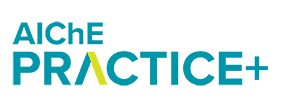
LIMITED TIME OFFER: Claim a 20% discount on eLearning courses with code ELEARN20. Offer is valid from April 1-30. Credential programs excluded from promo.
Pressure that gets out of control has been the cause of many of the most devastating incidents in the history of chemical processing. The science of overpressure and its prevention and mitigation impact nearly all elements of process safety management. Engineers working in process safety need to have a fundamental knowledge of pressure relief concepts even if they are never involved in the actual design of pressure relief. This course will provide that knowledge in an orderly progression, with concepts illustrated by numerous case studies.
Students will be introduced to the nature of overpressure and types of scenarios that can cause it in chemical processing. Students will then learn the types of devices available to provide pressure relief, as well as discuss the types of information needed to size relief for the various scenarios discussed. Finally, the course will present an overview of the basic approaches to safely mitigating the discharges from relieved pressure.
Unit 1
- State why pressure protection is essential for process equipment
- Define terms used when designing pressure relief equipment
Unit 2
- Describe scenarios where pressure protection is needed
- Examine case studies of incidents that occurred when pressure protection was lacking
Unit 3
- Describe locations and types of different types of pressure protection equipment
- Describe advantages of different overpressure protection systems
Unit 4
- Identify emergency relief device design sizing information needed when external or internal fires could occur
- Identify risk reduction designs when managing the potential for an external or internal fires
- Identify design approaches for containing and treating hazardous materials discharged from an emergency relief device
- Identify design approaches for emergency releases to the atmosphere
This intermediate course is for upper-level chemical engineering undergraduates who have had some exposure to process safety.
So that the student has the necessary background, ELA970 "Hazards and Risk: What Can Go Wrong?" should be taken before taking this course. In addition, it is recommended that the student have a basic understanding of (at least) toxicological hazards, fire and explosion hazards, and chemical reactivity hazards before taking this course. The SAChE undergraduate process safety curriculum includes courses that cover these topics.
- Unit 1 – Pressure Protection System Concepts
- Unit 2 – Scenarios Requiring Pressure Protection
- Unit 3 – Types of Pressure Protection Equipment
- Unit 4 – Designing Emergency Relief and Managing Discharge
Find answers to questions about registration and refunds, tuition and fees, travel and lodging (for location-based courses), how eLearning courses work, how credits work, and more.


